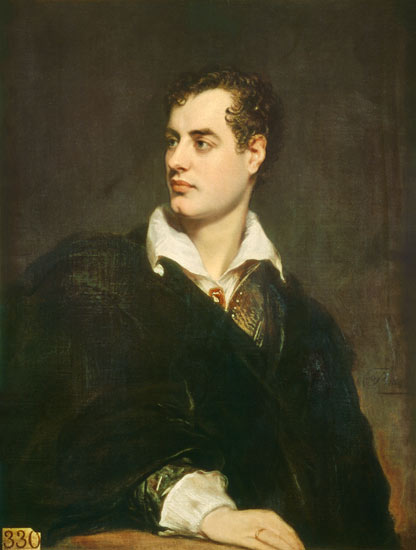Fact No. 71.
Lord Byron was a student of the Armenian language.
One of the most famous – and simultaneously infamous – figures of early 19th century Europe was Lord Byron. He was born in 1788 in England and died in 1824 following an illness caught while fighting alongside the Greeks in their war for independence from the Ottoman Empire – an indication, if one were needed, of his spirit of adventure. Lord Byron was renowned as a poet even at a young age, being a leading figure of the Romantic movement in literature, but was also a rather shocking public figure (also at that young age) as the subject of numerous scandals and love affairs.
His travels to the Continent – an escape from Britain, to which he would never return – included a stop for some months in 1816-1817 at Venice, where he pursued his landlord’s wife, among other occupations. And, indeed, there was one truly singular occupation in his daily routine there: studying Armenian.
Venice was and continues to be home to the Mekhitarist Congregation – Armenian monks who had settled on the island of San Lazzaro in 1717, with a monastery in Vienna as well (100 Years, 100 Facts will have an entry on that remarkable group in future). Lord Byron was very impressed with that institution and undertook to spend time at the island every day, as he describes in a letter: “By way of divertisement, I am studying daily, at an Armenian monastery, the Armenian language. I found that my mind wanted something craggy to break upon; and this — as the most difficult thing I could discover here for an amusement — I have chosen, to torture me into attention. It is a rich language, however, and would amply repay any one the trouble of learning it. I try, and shall go on; — but I answer for nothing, least of all for my intentions or my success.”
The studies lasted some months, and his friendship with the Mekhitarists ended up in some collaboration when it came to publishing a grammar of English and Armenian, as well as translating some works. But Lord Byron did not manage to get too far in his mastery of the Armenian language, the complexity of which he admits for himself. He was, by all accounts, far more successful in his romantic pursuits. In another letter he mentions: “I should have gone [to Rome] too, but I fell in love, and must stay that over. I should think that and the Armenian alphabet will last the winter. The lady has, luckily for me, been less obdurate than the language, or, between the two, I should have lost my remains of sanity. By the way, she is not an Armenian but a Venetian.”
Lord Byron’s interaction with the Armenian world in Venice is much celebrated even today. His presence on San Lazzaro is still marked, with a preserved room where he worked, along with items he used. Lord Byron may have been the very first Westerner in the modern era to take such an active interest in things Armenian, thereby setting the stage for other scholars – and perhaps other romantics as well – to try their hand at “the thirty-eight cursed scratches of Mesrob, the maker of alphabets”, challenging as though that might be at times.
References and Other Resources
1. Lord Byron’s Armenian Exercises and Poetry. Venice, 1870
2. Massimo Vangelista. “Lord Byron in the Armenian Monastery in Venice”, Letters from the exile: Italy and the fatal gift of beauty, September 4, 2013
3. Levon Saryan. “A Visit to San Lazzaro: An Armenian Island in the Heart of Europe (Part II)”, The Armenian Weekly, July 20, 2011
4. Wikipedia: “Lord Byron”
Image Caption
A painting of Lord Byron by Thomas Phillips (1770-1845).
Attribution and Source
By Thomas Phillips (1770-1845) [Public domain], via Wikimedia Commons
Recent Facts
Fact No. 100
…and the Armenian people continue to remember and to...
Fact No. 99
…as minorities in Turkey are often limited in their expression…
Fact No. 98
Armenians continue to live in Turkey…
Fact No. 97
The world’s longest aerial tramway opened in Armenia in 2010

